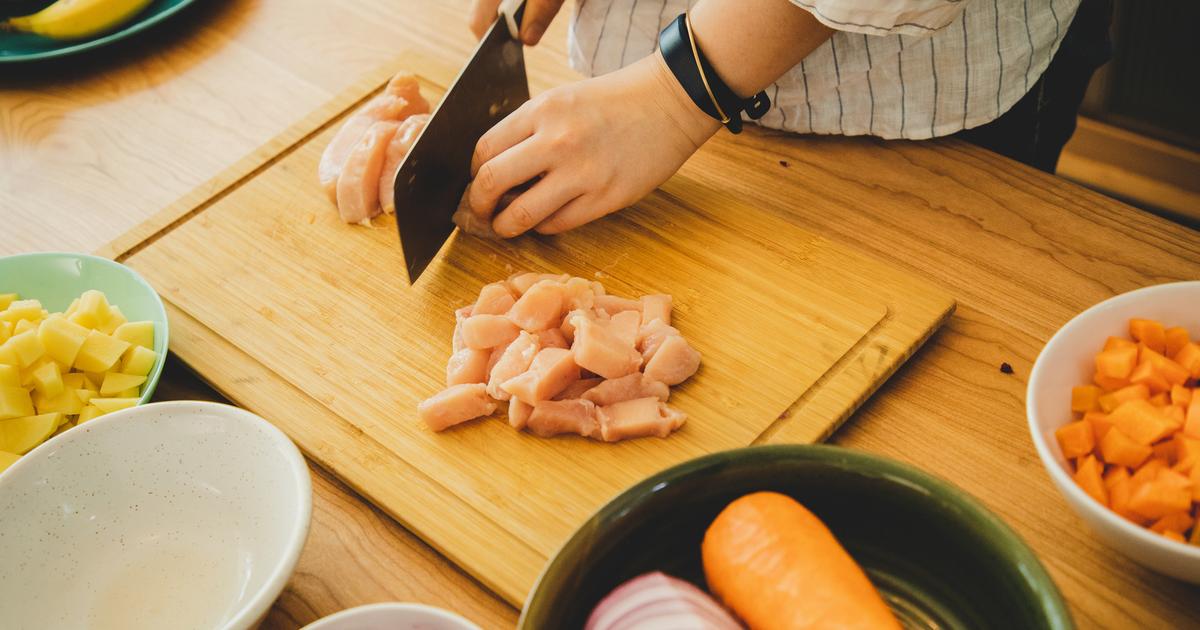In the kitchen, hygiene rules must be respected.
Do you ever use the same cutting board to cut a chicken fillet into pieces and chop an onion?
This is an error, recalls Océane Sorel, doctor in virology and immunology.
In a video published on her Instagram account on February 17, the specialist, known under the pseudonym thefrenchvirologist, lists food hygiene tips to avoid any bacterial contamination when cooking.
To discover
Podcast
> Gwyneth Paltrow: the strange guru from the Upper East Side
Download the Le Figaro Cuisine app for tasty and authentic recipes
Also read: Three drinks to consume in the morning to preserve your liver, according to a gastroenterologist
Raw meats on one side, vegetables on the other
“There is a cutting board for each type of food”: these are the ANSES recommendations, indicates Océane Sorel.
On the website of the National Agency for Food, Environmental and Occupational Health Safety, it is indeed advisable to reserve one board for raw meat and fish, and another for cooked products and vegetables. clean.
Once food is cooked, ANSES also recommends “not reusing dishes and utensils used to transport them raw”.
All this with the aim of avoiding “transfers of contaminants between foods” and limiting the risks of food poisoning, diarrhea, vomiting and abdominal pain.
Still according to ANSES, the five main bacteria responsible for such poisonings in France are campylobacter, salmonella, listeria monocytogenes, E. coli and Yersinia.
Wash your cutting boards
The virologist then gives some instructions for keeping your cutting boards clean.
Here she cites the USDA (the United States Department of Agriculture).
Thus, it is recommended “to wash them in hot, soapy water after each use, then rinse them with clean water and air dry them or pat them dry with clean paper towels.”
When choosing the board, Océane Sorel recommends opting for a hard and thick version, and changing it when it is too damaged.
In terms of materials, wood seems to be the most ergonomic, Olivier Boutou, Afnor expert in food safety (French Standardization Association), informed us in a previous article.
“The white boards are made of polyethylene (a plastic resulting from petroleum processing,
Editor’s note
).
They tend to wear out much more easily and bacteria will proliferate in the cuts made by the stab wounds,” he informed us.

